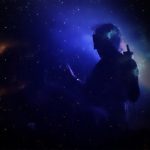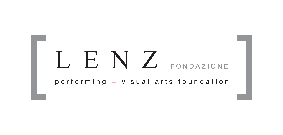
Kinship 22-24
Bestiary
Feminine Animal, 12 Actions
After the all women edition in 2021, the international performing arts festival Natura Dèi Teatri activates in 2022 the path BESTIARIO | Female Animal, 12 ACTIONS | PARENTELE for new naturalcultural performing models, hybridizing philosophy, mythology, sciences and arts. In the three-year period 2022_2024 twelve of the most interesting artists on the national and international scene will be invited to co-produce with the artists of Lenz 12 paths that will investigate the themes of gender roles, anti-speciesism, eco-feminism, overcoming of dualisms through projects articulated in residencies, productions, workshops, seminars, presentation of performances. The area of study of reference will be the theoretical corpus of the American philosopher Donna Haraway in the direction of the advent of the chtulucene, through the creation of PARENTS based not on biological continuity but on the recognition of affinities and differences and the possibility of coexistence.
In a historical period in which the definition assumes a relevant importance and the signifier is fundamental in order to ensure to the signified a guarantee of existence, visibility and representation, Lenz aims to ensure spaces of representation for women active in the cultural field, aimed at sharing the words and practices necessary for its project of generating new worlds. Lenz will increasingly become a physical and intellectual space aimed at giving shape to apparent utopias described by terms such as sustainability, equity, accessibility, feminism, transfeminism, interculturalism vs. cultural appropriation, gender medicine, intersectionality, activism, regeneration; apparent utopias characterised by a goodness of action that is concretising realities of the imagination in places (physical, social, virtual) of community.
Bestiary A
The language of the night
Annamaria Ajmone [antispecism]
Bestiario B
Ritual II Embrace the darkness
Stefania ?Alos Pedretti [transfeminism]
Bestiario C
The Critters Symposium
Jan Voxel Digital Art [digitalization]
Bestiario D
Allegedly, inhuman, posthuman
Monica Barone [post-humanism]
Ritual II Embrace the darkness
?ALOS’ research weaves together various threads, practices that often seem very distant from each other.
In his research, live music is the central element, which is crossed and reinterpreted in each performance from a different performing key appropriate to the object of investigation.
His work transcends the boundaries between the performing arts, integrating experimental music, performance, improvisation, figurative art, installation and video/art, and aims to actively involve the audience in a show capable of creating a strong sensory experience.
Her performances and artistic works have always focused on the struggle for the clearance and acceptance of diversity in a queer transfeminist key.
Her current research focuses on the contemporary transposition of the dramaturgy of RITE, an exploration of the relationship between sound and nature, the five senses that are opportunities for study, points of ignition for projects that cross the vibrations of sound with those of the body, stage action with vocal performance.
The body is the expressive instrument, from hair to skin, from voice to breath.
The live performance is a ritual, a collective experience, a sound and emotional journey.
Alos feels the time has come to go beyond herself, to take a step back. Interrupting again the linearity of design thought, seeking the path to understanding abstract thought, with ever greater determination.
Not a personal growth path, nor a collective healing practice, nor the accurate explanation of a profound insight, but the enactment of abstract thinking. How to destroy the verb? By throwing it into the mouth of a volcano, by drowning the words in the shadows and rotting vegetal proliferation, by throwing them into the volutes of fire hidden in clouds of black smoke.
Choosing places for the symbolic value of their light, thus beginning to work on a ritual that is created at the same time as and in proximity to a volcanic eruption.
Because, linking up with the semiotics of dreaming, the volcano has a symbology that incorporates the meanings of the four fundamental natural elements: fire (the magma, the lava), air (the profusion of gas, smoke and ash that it projects upwards, into the sky), water (the water vapour that it expels, as well as the flow of lava down its sides) and earth: the volcano is the mountain that connects the depths of the Earth (unconscious) to the sky (conscious thought).
This Ritual II aims to “explore the opposites, the two ends of the Whole. Because “everything – the light, the dark, the beauty, the pain – is perfect just as it is.”
The Critters Symposium. Bestiary of words and images for the fossil age.
The project is intended as a further ramification/development of The Critters Room. The aim is to build a path of encounter/compresence/germination between the corpus of images of the invisible inhabitants of the air – the ghosts of the anthropocene of The Critters Room – and the words/voices/gestures of a group of performers, artists, scholars. A “chorus” that we propose to build in the coming months, in a call of sisterhood, imagining together with Lenz the composition, meeting people (in presence or – if not possible – remotely), offering and feeding on their offering, choosing a textual corpus that belongs to the DNA of The Critters Room and letting all possible hybridizations flourish.
The corpus of images will be processed by Jan Voxel and presented in the form of a video, a responsive stream able to establish a real-time dynamic with the chorus. We imagine this performative event of images and voices as an open laboratory, the first provisional synthesis of the course.
An (indicative) list of reference authors from which to draw the vocal score: Donna Haraway, Matteo Meschiari, Ursula K. Guin, Andri Magnason. Guin, Andri Magnason, Anna Tsing, Timothy Morton, Antonella Anedda, and others.
The Critters Room embodies a loving practice of physical and digital archiving of atmospheric particles (Critters, quoting Donna Haraway). The protagonists of the project are: the archive and the community.
The slide archive: a corpus of over 400 microscope slides documenting the air we breathe over time. By exposing the slides to air for 12 to 24 hours, it has been possible to collect ‘samples’, where we can see the Critters, impalpable particles such as pollen, plant fragments, silicates, metal particles and atmospheric particulates, the famous PM10 and PM2.5, unburned hydrocarbon residue.
These are the real ‘Ghosts and Monsters of the Anthropocene’, living creatures that the present fossil age brings back into the air, haunting our present.
To share space and time with the now-living, forcing us to “make alliances” (making kin) to stay in contact – as Donna Haraway says – with a damaged planet.
The performative action began on 8 March 2020 (the first day of lockdown following the Covid-19 pandemic) and is still ongoing.
The photographic archive: each slide was photographed with a view camera specially designed for the smartphone. The two archives (physical and photographic) are in progress and are being enriched thanks to the residences (and the duly “trained” citizens who are asked to collect air samples from their terrace) and the community that Jan Voxel is building around the project.
The data archive: files with data from the pm10 and pm2.5 atmospheric particle measurements. The files are freely downloadable from the sensor.community website, which collects data from all the self-built air monitoring units installed around the world. These control units are intended as devices for citizen science, participation and grassroots activism by citizens.
The community and its sound archive: environmental recordings and interviews collected during the residencies, in order to keep an archive of the multiplicity of human (social) subjects involved in various ways in grassroots democracy, environmental activism and citizen science, united by practices of empowerment and close in an alliance “against the inevitable”.
Allegedly, inhuman, posthuman
Auckland
“A tortoise donated by explorer Cook to the king of Tonga in 1777 passed away yesterday at the age of two hundred. The animal, whose name is Tu’Imalila, died in the garden of the royal palace in Nuku, Alofa, the capital of Tonga. The people of Tonga regarded the animal as a member of the royal family and special caretakers were assigned to look after it. It had gone blind following a fire a few years earlier. Radio Tonga has stated that Tu’Imalila’s carcass will be sent to the Auckland Museum in New Zealand.”. Reuters, 1966
My research starts from the suggestions that science fiction literature has left me, in particular, the novel “Do Androids Dream of Electric Sheep?” (written in 1982 and from which the film Blade Runner, directed by Ridley Scott and also released in 1982, was based).
The plot is set in 1992 in an apocalyptic scenario, where a world war has killed millions of people and condemned entire species to extinction, forcing humanity to colonise space. Those left behind dream of owning a living animal, and companies produce incredibly realistic copies of dogs, cats, horses, sheep… Even the human being himself has been duplicated, so well, that he is indistinguishable and therefore banished from the earth.
In San Francisco, the setting for the novel, lives a policeman whose job it is to collect androids who break the law because they are confused with real human beings. It is the doubts that creep into him and his brutal job that I share, and which also prompt me, like Rick Deckard, the policeman who is the protagonist of Dick’s novel, to wonder what a human being really is.
“Human, inhuman, posthuman’ are the words that drive my reflections on the contemporary world, through questions such as: what really is a human being? On what values is our concept of ‘civilisation’ based? What models do we identify with? To be civilised means to have conquered the laws of nature and life (?). Probably it does.









![[cml_media_alt id='16485']un mosaico d'immagini della stessa tonalità crea una superficie a griglia dai colori celeste e blu[/cml_media_alt]](https://lenzfondazione.it/wp-content/uploads/2022/04/Jan-Voxel-Digital-Art-parentele-bestiari-lenz-fondazione-2022.png)

